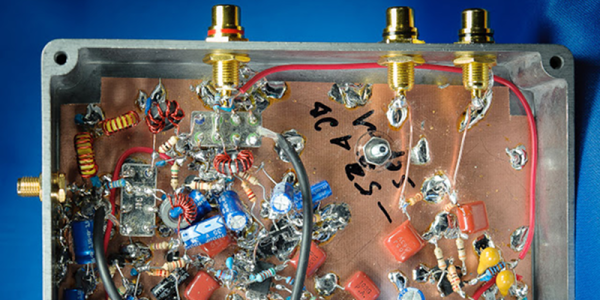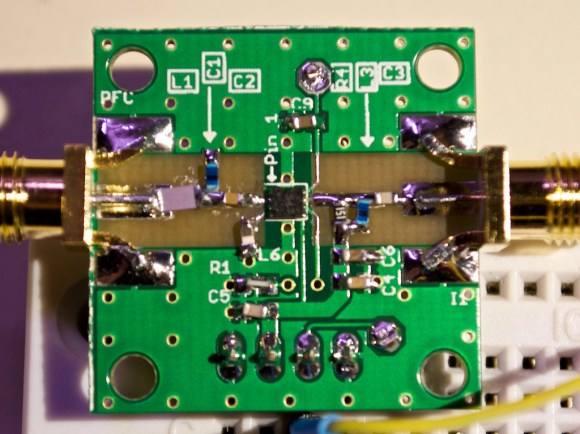If you’re planning on working satellites or doing any sort of RF work where the signal lives down in the dirt, you’re going to need a low-noise amplifier. That’s typically not a problem, as the market is littered with dozens of cheap options that can be delivered in a day or two — you just pay your money and get to work. But is there a case to be made for rolling your own LNA?
[Salil, aka Nuclearrambo] thinks so, and he did a nice job showing us how it’s done. The first step, as always, is to define your specs, which for [Salil] were pretty modest: a low noise figure, moderate gain, and good linearity. He also wanted a bandpass filter for the 2-meter amateur radio band and for weather satellite downlinks, and a bias-tee to power the LNA over the coax feedline. The blog post has a detailed discussion of the electrical design, plus some good tips on PCB design for RF applications. We also found the discussion on bias-tee design helpful, especially for anyone who has ever struggled with the idea that RF and DC can get along together on a single piece of coax. Part 2 concentrates on testing the LNA, mostly using hobbyist-grade test gear like the NanoVNA and tiny SA spectrum analyzer. [Salil]’s tests showed the LNA lived up to the design specs and more, making it more than ready to put to work with an RTL-SDR.
Was this more work than buying an LNA? Absolutely, and probably with the same results. But then again, what’s to learn by just getting a pre-built module in the mail?














